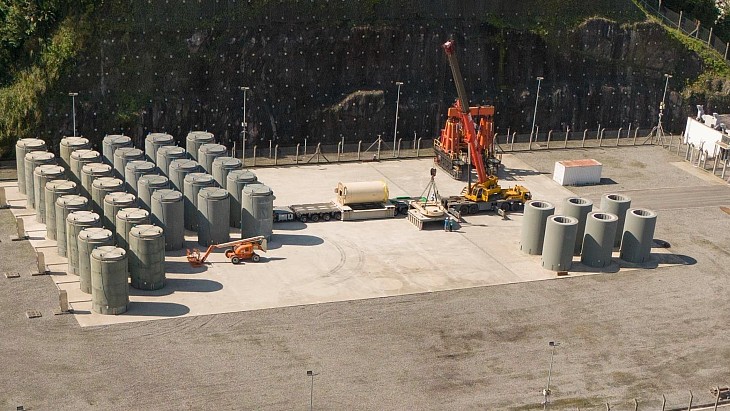Canada's Nuclear Waste Management Organisation (NWMO) has completed drilling the first borehole near Ignace to a depth of about one kilometre. It is one of five sites in Ontario to be investigated for the siting of a deep repository for the long-term management of the country's used nuclear fuel.
.jpg) |
| Workers drilling the first borehole at Ignace (Image: NWMO) |
Drilling began on 6 November in a rock formation known as the Revell Batholith about 35km west of Ignace, Ontario. The hole was drilled using a skid-mounted diamond drill rig. NWMO announced that drilling of the first borehole was completed on 16 January.
According to NWMO, it is anticipated that the deep geological repository in the type of geology found in the Ignace area (crystalline rock) would be developed at a depth of some 500 metres below ground surface.
NWMO anticipates drilling three initial boreholes, one after the other. Eventually, more extensive borehole drilling may be undertaken in a location identified together with people in the area as a preferred potential repository site.
Further activities to analyse the core samples and explore the borehole at depth are now under way, NWMO said. Geoscience, environmental, engineering and repository safety specialists will continue to work through this year to complete the borehole analyses, interpret data and share the findings with an expert group for peer review. Once that is complete, NWMO will share findings with the community. The findings, along with those from earlier studies, will guide the NWMO in working with communities in planning any future study activities.
Mahrez Ben Belfadhel, vice president of site selection at NWMO, said: "Completing the drilling of our first borehole to obtain initial core samples and provide access to the geological conditions at depth marks another significant milestone in Canada's plan for the safe, long-term management of used nuclear fuel."
NWMO is searching for a suitable site for the repository through a long-term process called Adaptive Phase Management, launched in 2010. The process is progressively narrowing down study areas from a list of communities that registered interest. The preferred site must have a suitable rock formation in an area with an informed and willing host, and the project will only move forward in partnership with First Nation and Métis peoples and surrounding communities.
Twenty-one communities, all in Ontario or Saskatchewan, initially requested preliminary assessments. Of the 11 areas selected for Phase 2 studies, five in Ontario now remain: Ignace; Hornepayne; Huron-Kinloss; Manitouwadge; and South Bruce.
NWMO said it expects to be able to select the preferred site for detailed site characterisation by around 2023.
Researched and written
by World Nuclear News




_58913.jpg)
_35510.jpg)
_93097.jpg)





